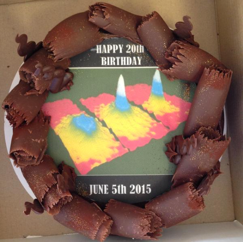-
SCIENCE
-
QUANTUM CURIOUS
-
NEWS/EVENTS
-
PEOPLE
Bose-Einstein Condensates
A Bose-Einstein condensate (BEC) is for atoms what a laser is for light - a super-organized form of matter waves!
At super-ultra-low temperatures, particular atoms (called Bosonic) like to get together and sing in unison. That is, they are all in the same quantum state, and they form a kind of super-atom.
As the temperature is lowered, the atoms condense into an exotic quantum phase of matter, where every atom is not just indistinguishable, but is moving in step with every other atom.
All particles in nature have one of two possible types of quantum statistical property: they are either Bosonic or they are Fermionic. Bosonic particles, such as photons (particles of light), neutrons, or particular species of atoms, have the peculiar property that they are highly social, meaning that they very much like to be in the same quantum state. This is a purely quantum property and is the cause of Bose-Einstein condensation. Superconductors and superfluids are other amazing examples of Bosonic phenomena. In contrast Fermions are antisocial, so that any two identical Fermions just can’t stand each other - they simnply cannot be in the same quantum state. The fact that electrons are Fermionic is the basic reason for the structure of the periodic table - electrons populate the available quantum states for a given atomic nucleus, to make the atom electrically neutral. To learn more about BEC, visit the introduction at the University of Colorado where dilute gas BEC was first discovered.

This year BEC turns 20! After decades of intenstive research, BEC has given rise to a rich diversity of subfields, and remains as exciting and challenging as it was in 1995. At Otago, Bose-Einstein condensation was achieved in 1998 (first in the southern hemisphere). Current work focuses on the study of collisions of atoms at ultra-low temperatures, parallel production of multiple BECs, and the strange physics of identical quantum particles.
Find out more at the Light and Matter research group.
ABOUT QSO
The Centre for Quantum Science is a University of Otago Research Centre hosted by the Department of Physics.
CONTACT
Ashton Bradley
ashton.bradley [at] otago.ac.nz
Niels Kjærgaard
niels.kjaergaard [at] otago.ac.nz